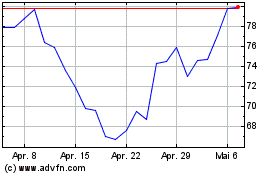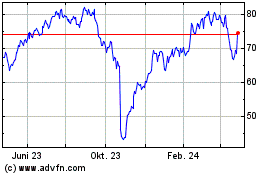Despite a return to something more closely resembling pre-pandemic
levels in 2022, the TransUnion (NYSE: TRU) 2023 State of
Omnichannel Fraud Report found that digital fraud continues to
rise. According to proprietary insights from TransUnion’s global
intelligence network and a specially commissioned consumer survey,
the pivot to increasingly digital transactions since the beginning
of the pandemic means the overall risk to individuals and
organizations is even greater than it was pre-pandemic.
The study showed that 4.6% of all customers’ digital
transactions globally were suspected to be fraudulent. This
percentage is in line with the rates found in 2019. However,
despite the similarities to the percentage prior to the pandemic,
because the number of transactions conducted digitally has markedly
risen in the last few years, the total volume of suspected digital
fraud attempts has increased dramatically. Globally, such attempts
have increased by 80% from 2019 to 2022, while rising 122% for
digital transactions originating in the U.S. during that time.
“The pandemic crystallized the fact bad actors focus their
efforts on organizations and institutions that have direct access
to money, products or services with easily transferable monetary
value,” said Shai Cohen, senior vice president and global head of
fraud solutions at TransUnion. “While government-funded pandemic
relief programs experienced headline-grabbing levels of fraud,
digital fraud trends pointed to industries that saw significant
growth in consumer digital engagement.”
Credit Card Fraud is Most Common, but
ACH/Debit and Synthetic Identity Fraud are Rising
|
Fraud type |
Percent of digital fraud in 2022 |
Volume change 2019–2022 |
|
Credit card |
6.5% |
76% |
|
Account takeover |
6.3% |
81% |
|
True identity theft |
6.2% |
81% |
|
ACH/Debit |
6.0% |
122% |
|
Synthetic identity |
5.3% |
132% |
Source: TransUnion TruValidate™
Top Industries Targeted by Suspected Digital Fraud
Globally Include Gaming and Retail; Travel & Leisure Fraud
Among Those on the Rise in the U.S.
Globally, the gaming and retail industries saw the highest rate
of suspected digital fraud at 7.5% and 7.2%, respectively. These
were followed by video gaming at 5.4%, financial services at 4.2%
and communities (i.e., online dating and forums) at 4.0%.
However, the highest rate of growth globally since 2019 was
observed in the travel & leisure industry. This group saw a
117% increase in suspected digital fraud globally as more and more
consumers looked to resume traveling following the pandemic period.
For transactions originating from the U.S., the travel &
leisure industry also saw a significant rise in suspected digital
fraud, where it increased by 42% since 2019. The logistics and
financial services industries also experienced significant growth
in digital fraud attempts, up 67% and 44% over the time period,
respectively.
Gaming and Retail Saw The Highest
Suspected Digital Fraud Rate between 2019 and 2022, but Industries
Such As Financial Services and Travel & Leisure are Growing
Rapidly
|
Industry |
Global suspected fraud attempt rate 2022 |
Global suspected fraud attempt rate % change
2019–2022 |
U.S. suspected fraud attempt rate % change
2019–2022 |
|
Gaming (online sports betting, poker, etc.) |
7.5% |
-21% |
-15% |
|
Retail |
7.2% |
7% |
8% |
|
Video Gaming |
5.4% |
-82% |
-72% |
|
Financial services |
4.2% |
39% |
44% |
|
Communities (online dating, forums, etc.) |
4.0% |
-8% |
-52% |
|
Travel & leisure |
2.1% |
117% |
42% |
|
Telecommunications |
2.1% |
-51% |
-39% |
|
Insurance |
1.7% |
22% |
-90% |
|
Logistics |
1.3% |
63% |
67% |
Source: TransUnion TruValidate
Consumers Regularly Face Fraud Across a Range of
Communications Platforms
The study also found that a large percentage of people are being
impacted by fraud attempts, and across a wide range of
communications vehicles. In a TransUnion-commissioned consumer
survey across 18 countries and regions globally, 52% of respondents
indicated that they were targeted by fraud via email, online, phone
call, or text messaging in the three months beginning September
2022. With U.S. respondents, 58% said they had been targeted by
fraud attempts via those communications channels over the same time
period.
“The explosion of digital transactions, the accelerated adoption
of digital technologies, and increasing appetite for faster access
to funds/credit, have led to an increase in fraud losses,
particularly in digital channels,” said Naureen Ali, vice president
of product management at TransUnion. “Consumers are expecting
organizations to protect their identities and online accounts, and
those companies that do not adequately honor those preferences may
lose business as a result.”
The study explored other types and channels of fraud. For
instance, TransUnion determined that while the vast majority (85%)
of calls received by its U.S. financial services call center
customers were from mobile phones in 2022, just 14% of all
high-risk calls were made from them last year. Conversely, for the
3% of U.S. financial services call center calls that were made from
non-fixed Voice over Internet Protocol (VoIP)—a phone number that
isn’t associated with a physical address—62% of all high-risk calls
into the call center came from them last year making it the
riskiest channel for the call center.
Data Breaches Fuel Identity Engineering, Record Balances
Attributed to Synthetic Identities
The study also examined the volume and severity of data breaches
over the course of 2022 and compared them to previous years, using
publicly available data analyzed by SontiqTM, a TransUnion
company.
Results showed that the number of data breaches in the U.S.
increased by 83% from 2020 to 2022. In addition to the overall
increase in volume, the severity of data breaches also rose,
reflected in an increase of 6% in Sontiq’s Breach Risk Score over
that time period.
These breaches have played a key role in helping to fuel an
explosion in identity engineering, with synthetic identities
becoming a record-setting problem in 2022. Outstanding balances
attributed to synthetic identities for auto, credit card, retail
credit card and personal loans in the U.S. were at their highest
point ever recorded by TransUnion—reaching $1.3 billion in Q4 2022
and $4.6 billion for all of 2022.
TransUnion came to its conclusions based on intelligence from
its identity and fraud product suite that helps secure trust across
channels and delivers efficient consumer experiences
– TransUnion TruValidate. The rate or percentage of suspected
digital fraud attempts reflect those which TransUnion customers
either denied in real time due to fraudulent indicators or
determined were fraudulent after reviewing—compared to all
transactions it assessed for fraud.
Download the TransUnion 2023 State of Omnichannel Fraud Report
to learn more. Specific country and regional data in the report
include the United States, Brazil, Canada, Chile, Colombia,
Dominican Republic, Hong Kong, India, Kenya, Mexico, Namibia,
Philippines, Puerto Rico, Rwanda, South Africa, Spain, United
Kingdom and Zambia.
For more information and insights on global fraud
trends, please download the report.
About TransUnion (NYSE:TRU)
TransUnion is a global information and insights company with
over 12,000 associates operating in more than 30 countries. We make
trust possible by ensuring each person is reliably represented in
the marketplace. We do this with a Tru™ picture of each person: an
actionable view of consumers, stewarded with care. Through our
acquisitions and technology investments we have developed
innovative solutions that extend beyond our strong foundation in
core credit into areas such as marketing, fraud, risk and advanced
analytics. As a result, consumers and businesses can transact with
confidence and achieve great things. We call this Information for
Good®—and it leads to economic opportunity, great experiences and
personal empowerment for millions of people around the
world. http://www.transunion.com/business
|
Contact |
Dave Blumberg |
|
|
TransUnion |
| |
|
| E-mail |
david.blumberg@transunion.com |
| |
|
| Telephone |
312-972-6646 |
TransUnion (NYSE:TRU)
Historical Stock Chart
Von Mär 2024 bis Apr 2024

TransUnion (NYSE:TRU)
Historical Stock Chart
Von Apr 2023 bis Apr 2024
